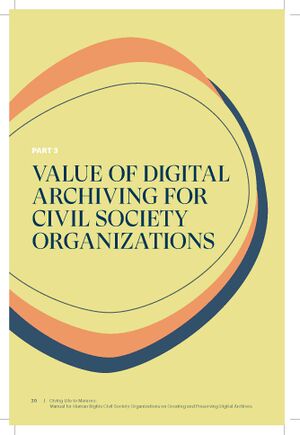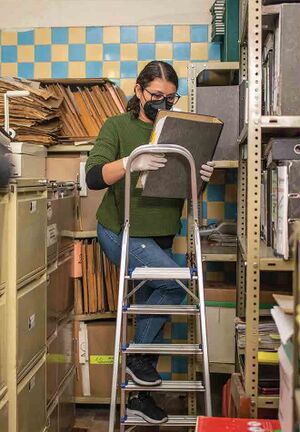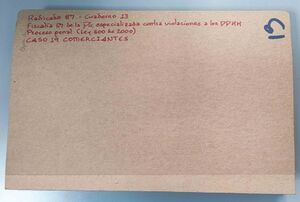Value of Digital Archiving for Civil Society Organizations

The trouble with civil society-collected archival material on mass human rights violations is it was never intended to be an archive.
CSOs collect documents, photographs, audio-visual recordings, press clippings, artifacts, and other materials not in order to archive and preserve them but rather to achieve concrete impact on a specific legal, political, or social process and event. An organization might be collecting signatures of citizens opposing a war to petition the government to stop the conflict, or a CSO might be gathering testimonies of war crimes survivors and witnesses to provide as evidence in a legal case against specific perpetrators or for providing reparations to victims. In any case, the focus of CSO activists working in a time of conflict or a violent regime rule will, very reasonably, not be on identifying and listing each item and carefully describing, arranging, and structuring the gathered material. Rather, they will be dealing with overwhelming events at hand, trying their best to keep working and collecting as much material as possible.
CSOs collect data on a broad scope of human rights violations, including killings, disappearances, imprisonment, torture, gender-based crimes, and many others. These records are often complemented by documents relating to relevant publications, studies, documentation on political and public events, public perception of various issues, and data on the social and economic impacts of authoritarian regimes and armed conflicts. Further, these materials can also include records of activities of different political, social, or armed groups and CSOs.
Other types of data include documents relating to peace-building and transitional justice processes, such as judicial proceedings, truth-telling sessions, commemorative practices, and reparation programs. These records can also include statements from survivors, witnesses, or victims’ families, various judicial documents, analyses, media reports, photographs, audio-visual material, and items and artifacts such as campaign materials, diaries, drawings, letters, and the like.
As a result of the context and manner in which CSOs have gathered them, such collections can often be found as groups of non-structured material—perhaps as stacks of folders with paper documents or groups of unmarked audio-visual files. The actual size of the collection might be unclear, along with the categories and types of material it contains. Sometimes, such material can be in danger of physical degradation or other harm.
Yet, as the amount of collected material continues to grow, along with the need to search and access it, it becomes increasingly clear that the collection has gained historical, legal, and social value in addition to its operational purpose. This is often the case once a conflict or a violent regime rule has ended and society enters transitional justice processes. The CSOs’ archival collections can be used to achieve accountability, support reparation programs, develop memorialization initiatives, and devise educational resources.
For CSOs that have gathered or obtained such invaluable collections of materials that are—in archival terms—undefined, unorganized, and therefore unusable, transforming these collections into proper, usable, and sustainable archival collections becomes a necessity. When these archives contain physical material that needs to be digitized, born-digital, or both, achieving this goal will require an organization to embark on the process of digital archiving.
Creating a digital archive can ensure long-term preservation of the collected material, especially if it might be at risk. By digitizing physical collections, we create copies that can be sustainably preserved independently of the original item and its condition. Moreover, for digitized physical items and born-digital files, creating a digital archive allows us to ensure sufficient backup copies of the archival material—and that they are safely stored and easily located to ensure their security and resilience. In this way, digital archiving allows us to retrieve the archive’s content, even when the material in the primary collection has been lost, corrupted, or destroyed.
Beyond mere preservation, creating a digital archive allows for substantial enhancement in managing and operating the content, as well as identifying, searching, locating, and accessing its individual items. Regarding content management, digital archiving is a true “game changer” regarding the number and scope of improvements it allows. Starting from the obvious, rather than going through shelves or boxes, the archivist can click through a database, move an item from one collection to another, or change its name or description. Content can be listed, reviewed, retrieved, copied, or checked for errors—or virtually any other archival action can be performed more quickly and efficiently. A significant additional benefit of digital archives is they allow for each action taken on any archival item to be recorded. Hence, in addition to an item, the entire record of actions taken on it is also preserved in the archive. This is important in determining the chain of custody over an item and is of particular relevance for ensuring the credibility of archival content.

An equally significant advantage of digital archiving—particularly for CSOs working with archival material on human rights violations—is the immense improvements it brings to the potential for external access, outreach, and use in education, as well as its leverage in various transitional justice processes. Digital archives containing nonsensitive public material can be made easily accessible online to anyone, anywhere in the world—not just mere access to the material, but also the quality of that access is substantially advanced, as digital archives enable meaningful search of content using various criteria; review and analysis of selected groups of items; simultaneous access and use of material by multiple users; and copying of individual files by external users.
Such democratized and enhanced quality and experience of access and use of digital archival material enables its more extensive and varied use—by not only external users but also the CSOs that create and own those archives. This is because digitally archived material can efficiently and in a variety of formats, be made available, presented to the public, or used for content production, education, and many other purposes. The CSOs can—and do—raise awareness of their archives, thereby extending their visibility, reach, leverage, and impact.
The digital archives created during conflict or violent regime rule can be used to achieve peace, support victims and potential targets of violence, and enhance democratic processes. Digital archives are often developed and leveraged in post-conflict and post-authoritarian periods as important tools for transitional justice processes, as they are used to inform and teach about the violent past, fight impunity, and support truth-telling, memorialization, and reparation programs. This often includes the development of educational programs and resources, the establishment of museums and documentation centers, and support for projects aimed at improving victims' rights or advancing reconciliation processes. Digital archives are also used for academic research, media reporting, and artistic projects dealing with the violent past.

These various uses of digital archives can and are being implemented by CSOs and other external users: victims’ groups, the media, legal professionals, academics, artists, etc. Digital archives streamline access and allow for more comprehensive visibility into their content, thus creating a multiplier effect that significantly extends their reach, raises the extent of their use and the number and scope of users, and ultimately strengthens the archives’ overall impact.